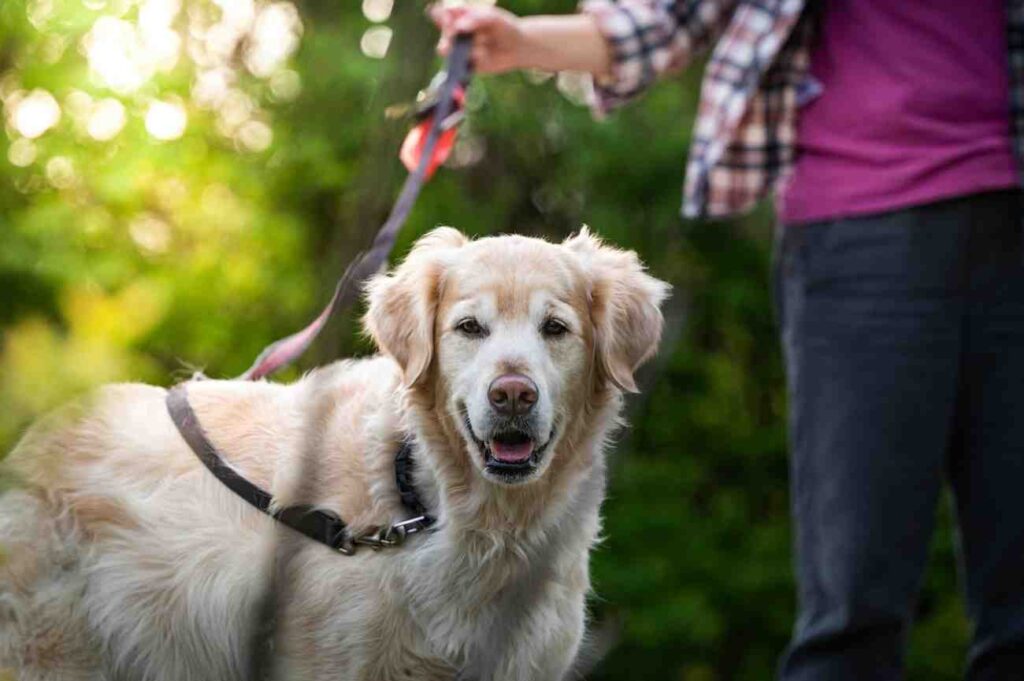Hip dysplasia is one of the most common health problems Golden Retrievers face. It’s a condition that can make walking, running, or even sitting uncomfortable for your furry friend. If you’ve noticed your Golden acting a bit different, maybe limping or avoiding stairs, you might wonder if hip dysplasia could be the cause. Don’t worry. This guide will break everything down in simple words so you can help your dog live a happy, comfortable life.
What is Hip Dysplasia?
Before we dive into the causes, let’s understand what hip dysplasia really is. A healthy hip joint works like a ball and socket. In dogs with hip dysplasia, this joint doesn’t fit together properly. Over time, this misalignment can cause pain, stiffness, and arthritis.
What Causes Hip Dysplasia in Golden Retrievers?
Hip dysplasia has a lot to do with genetics. If your Golden’s parents had it, there’s a good chance your dog might too. But genes aren’t the only factor. Puppies who grow too fast or eat too much can develop weak joints. Overexercising young dogs, especially before their bones are fully developed, can also increase the risk.
My neighbor’s Golden Retriever, developed hip dysplasia when he was just two years old. They used to take him on long jogs every day, thinking it was good for his energy levels. It turned out his growing joints couldn’t handle the stress, which made things worse for him later on.
Signs of Hip Dysplasia in Golden Retrievers
Golden Retrievers are known for their playful and energetic personalities. So, if your dog starts acting less active or avoids running and jumping, it’s worth paying attention.
Some signs to watch for:
- Limping or favoring one leg
- Trouble getting up after lying down
- Difficulty climbing stairs or jumping onto the couch
- Clicking or popping sounds when they move
Sometimes, the symptoms can be subtle. You might notice your dog doesn’t want to play fetch as much or seems stiff in the mornings. These small changes can be a sign that something isn’t right.
How Vets Test for Hip Dysplasia
If you suspect your Golden has hip dysplasia, a trip to the vet is the next step. The vet will usually start with a physical exam. They might gently move your dog’s legs to see if there’s pain or stiffness.

To confirm the diagnosis, the vet may suggest X-rays. These images help show how the hip joint looks inside and whether there’s any damage. Sometimes, vets also recommend advanced tests like CT scans, but this is less common.
How is Hip Dysplasia Treated?
The good news is that hip dysplasia can be managed. Treatment depends on how severe the condition is. For mild cases, your vet might suggest:
- Weight management: Keeping your Golden at a healthy weight reduces stress on their joints.
- Exercise: Low-impact activities like swimming can help strengthen muscles without putting too much strain on the hips.
- Medication: Pain relievers or anti-inflammatory drugs can make your dog more comfortable.
- Supplements: Glucosamine and chondroitin are popular options for joint health.
For more severe cases, surgery might be needed. Surgical options include:
- Femoral Head Ostectomy (FHO): This surgery removes part of the hip joint to reduce pain.
- Total Hip Replacement (THR): This is a more advanced option where the entire hip joint is replaced with an artificial one.
How Much Does Hip Dysplasia Surgery Cost?
Surgery can be expensive, but it’s often worth it for improving your dog’s quality of life. On average, a total hip replacement can cost between $4,000 and $7,000 per hip. FHO surgery is usually cheaper, ranging from $1,500 to $3,000.
The exact cost depends on factors like your location, the vet’s experience, and the size of your dog. Pet insurance can help cover some of these expenses, so it’s worth checking your policy if you have one.
Recovery After Hip Dysplasia Surgery
If your Golden undergoes surgery, the recovery process is crucial. After the procedure, your dog will need plenty of rest. For the first few weeks, you’ll need to restrict their movement to prevent any damage to the healing joint.
Physical therapy can also help your dog regain strength and mobility. Simple exercises like gentle leash walks or swimming (with your vet’s approval) are great options.

One of my friends went through this with her Golden, Bella. She created a cozy recovery space in her living room with a soft bed and plenty of toys to keep Bella entertained. Within a few months, Bella was back to playing fetch, something she hadn’t done in years.
Related Post: Mistakes to Avoid When Caring for Golden Retriever Wounds
How Long Can Golden Retrievers Live with Hip Dysplasia?
Golden Retrievers with hip dysplasia can live long, happy lives, especially with proper care. Early diagnosis and treatment can make a huge difference. Whether you choose non-surgical treatments or surgery, regular vet check-ups and monitoring are key to ensuring your dog stays comfortable.
How to Prevent Hip Dysplasia in Golden Retrievers
While you can’t always prevent hip dysplasia, there are steps you can take to lower the risk:
- Choose a responsible breeder: If you’re getting a puppy, make sure the breeder tests for hip problems in their dogs.
- Feed a balanced diet: Overfeeding puppies can lead to rapid growth, which isn’t good for their joints.
- Exercise wisely: Avoid high-impact activities with young dogs. Instead, stick to gentle walks and playtime.
- Use joint supplements: Talk to your vet about starting glucosamine or other supplements early on.
You may interested: Cost of Golden Retriever Stud Fees
In Short
Hip dysplasia can sound scary, but it’s not the end of the world for your Golden Retriever. With early detection, proper care, and lots of love, your dog can still enjoy a great quality of life.
As a dog owner, it’s important to stay informed and work closely with your vet. Whether you’re managing symptoms, planning for surgery, or focusing on prevention, remember that your Golden depends on you. And with a little effort, you can make their golden years truly shine.
FAQs About Hip Dysplasia in Golden Retrievers
1. Can a dog fully recover from hip dysplasia?
While dogs may not regain perfectly normal hips, proper treatment can help them live comfortably and regain mobility to enjoy their favorite activities.
2. Can you fix hip dysplasia in dogs without surgery?
Yes, mild cases can often be managed with weight control, physical therapy, supplements, and medications. However, severe cases might need surgery for lasting relief.
3. Will a dog cry with hip dysplasia?
Dogs may not always cry but can show pain through limping, stiffness, or avoiding movement. Watch for these subtle signs of discomfort.
4. Can hip dysplasia come back after surgery?
The condition itself doesn’t return after surgery, but complications like arthritis or implant issues can arise, requiring regular vet check-ups.
5. Is hip dysplasia surgery risky?
All surgeries carry risks, but hip dysplasia surgeries are generally safe and can significantly improve a dog’s quality of life when performed by skilled surgeons.




[…] Retrievers, English Creams are prone to certain genetic health issues. Common conditions include hip and elbow dysplasia, heart problems, and certain types of cancer. However, reputable breeders in […]
[…] to cancer (higher ratio), hip dysplasia, and joint problems; prone to allergies and hearing loss after 10 […]
[…] Hip Dysplasia: This condition affects the hip joint and can lead to arthritis. Regular exercise and maintaining a healthy weight help mitigate risks. […]
[…] Hip Dysplasia: This joint condition is common in both German Shepherds and Golden Retrievers. Regular exercise and a healthy weight can help. […]
[…] Hip Dysplasia: Common in Golden Retrievers, this affects the hips and causes discomfort. […]
[…] Hip dysplasia […]
[…] common issue in large breeds, hip dysplasia, where the hip joint doesn’t develop […]
[…] Hip Dysplasia: Causes joint pain […]
[…] Joint problems like hip dysplasia. […]
[…] Hip Dysplasia: Regular check-ups and maintaining a healthy weight can help prevent this. […]
[…] Hip Dysplasia: Since Golden Retrievers are susceptible to hip dysplasia, keeping them at a healthy weight is important. Foods with glucosamine and chondroitin are great for supporting joint health. […]